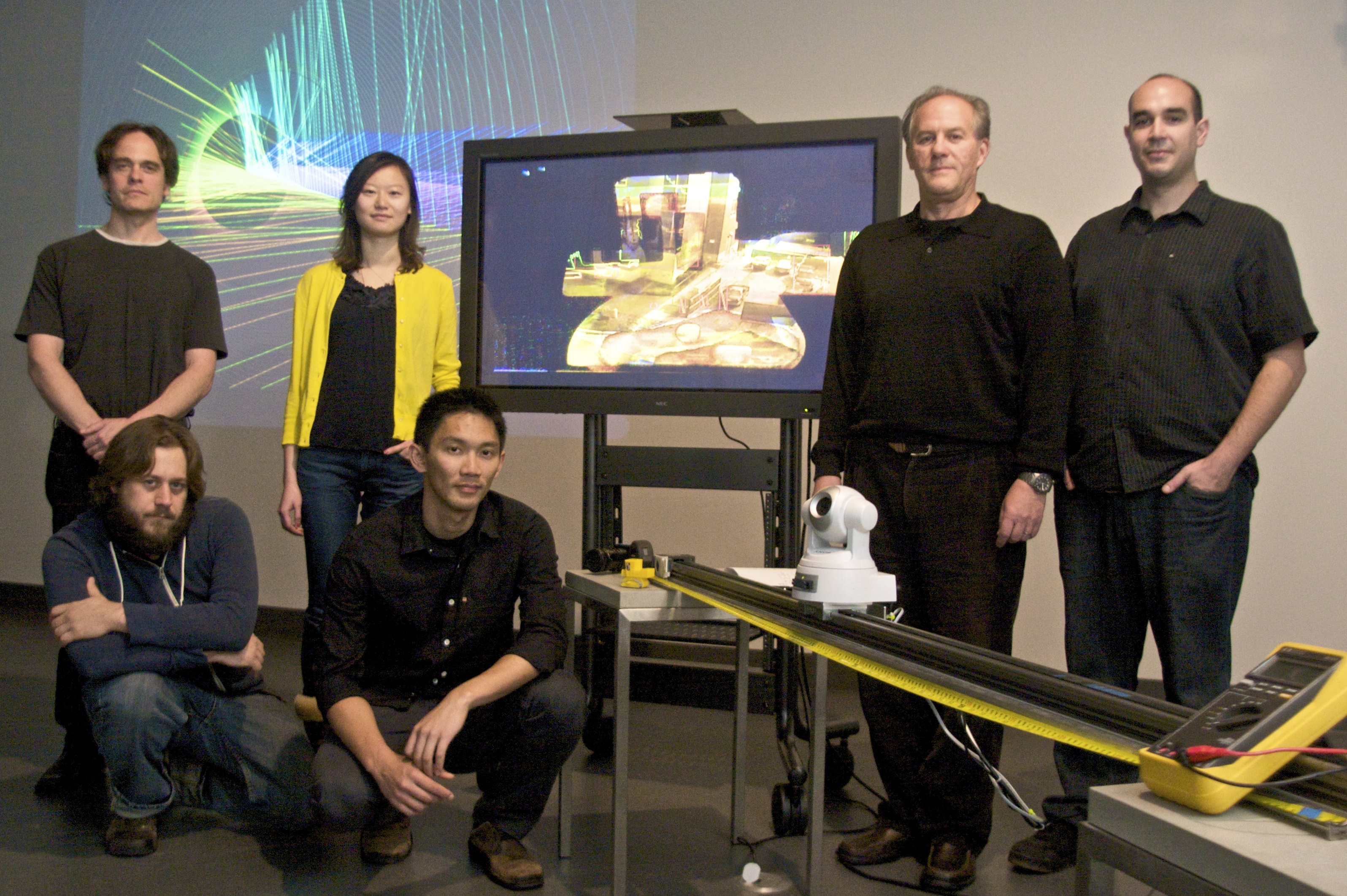
Experimental Visualization Lab at UCSB Receives Grants from the Deutsch Foundation and the National Science Foundation
The Experimental Visualization Lab (ExpVisLab) at UC Santa Barbara has received from the Robert W. Deutsch Foundation and the National Science Foundation grants totaling $224,000 to support scholarly work in data visualization and computational photography.
Under the direction of George Legrady, professor of digital media in the Media Arts & Technology (MAT) graduate program at UCSB, the ExpVisLab is dedicated to research in visual and spatial data visualization and optical-computational processes. The work is based on an interdisciplinary approach that combines methodologies from the arts and engineering.
The Robert W. Deutsch Foundation, a private philanthropic organization that supports technology-related programs through strategic partnerships with public universities, awarded $200,000 to the ExpVisLab and UCSB's Allosphere, a cutting edge facility for data and scientific visualization, directed by JoAnn Kuchera-Morin, MAT professor and director of the campus's Allosphere.
The $124,000 grant from the National Science Foundation will help fund experimental research to study the analysis of complex images. This project consists of a distributed system of three robotically-mobile cameras, collectively analyzing a subject to create an optimally synthesized view of it.
Both the ExpVisLab and the Allosphere, which is located in the California Nanotechnology Institute at UCSB, are part of the MAT graduate program.
Legrady described the critical contributions that such an interdisciplinary approach can bring to the fields of data visualization and computational photography. "In both fields, engineers develop the computational and physics fundamentals, whereas the visual experts bring methodologies from aesthetics and cultural analysis to study the communication potentials and operations at the reception level," he said. "Experiments through implementation and software/hardware prototype design may potentially contribute feedback to advance engineering and lead to innovation in the arts."
Before transitioning to interactive multimedia in the early 1990's, Legrady focused his research analysis of the visual language of the photographic image. "Optical systems still proceed on the basis that the photographic image is neutral in its representation of the world, and this funding will allow to dig deeper and identify how contemporary imaging systems are reformulating how the culture at large, and scientists in the lab, internalize such images," he said.
Legrady acknowledged the great opportunities the two grants offer in advancing the interdisciplinary approach the MAT program has fostered during the past decade, integrating the knowledge bases of the arts and engineering. MAT faculty members represent a broad range of expertise that includes computer science, signal processing and multimedia engineering, electronic music, architecture, and digital arts.
† George Legrady (second from right) in the Experimental Visualization Lab with graduate students (back row, l-r) Marco Pinter, Qian Liu, and Danny Bazo; and (front row, l-r) Karl Yerkes and Yuan-Yi Fan.
Photo credit: Rod Rolle
Related Links
Experimental Visualization Lab
UCSB Allosphere
George Legrady



